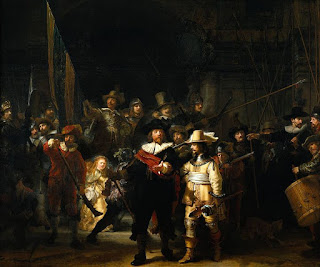Economic cycles are a natural part of business life and have occurred in one form or another for nearly every generation. These boom and bust cycles exist in everything from the biological organisms to stock market investing. It is often beneficial to view economic theories of business cycles to understand how imperfect information impacts the national economy as it moves through these growth patterns. Such cycles are many years in the making and can have a devastating impact on the economy if recovery is not forthcoming.
Bob Lucas, a Nobel Prize Laureate, developed a monetary theory of business cycles that helps explain economic growth spurts and decline (1972). To him, inaccurate perceptions of economic factors contribute to these cycles that push the system out of homeostasis. Firms, and their management, only have limited time and resources for understanding their environment and typically focus on only that information which is needed for their immediate purposes. It takes considerable amount of effort for firms to figure out what changes in the environment are temporary and what changes are more permanent. It is this inaccuracy that leads to market overreaction that veers the system off of course.
It is beneficial to see how this works in a smaller market. Organizations working within a localized market determine the prices they can reasonably sell their products (Lucas Jr., 1972). Price is impacted by the amount of purchases and the supply of products. With perfect information quantities adjust to supply while prices respond to aggregate spending shocks. Accordingly, with imperfect information firms respond to aggregate spending shocks in the short-run but not the supply quantities in the long run. This can create overproduction which impacts the economic chain throughout a business cycle and even into the next generation.
A model developed by Paul Samuelson (1958) helps to further explain the concept of a generational contract. Two generations, one young and one old, are engaged in the market. The young sell part of their production to the old who give the young financial compensation. The young hope to save some of the money in the anticipation of purchasing products from the next generation. The entire process works off of anticipation and an implied social contract. It is believed that by producing today the young will reap the rewards of their work tomorrow.
The wider impact of this veering off of course can impact generational growth potentially breaking the generational economic cycle. Artificially adjusting the market in one generation could have an impact on the economic viability of the next. Using the above example it is possible to see how an economic problem is created if one generation cannot produce and save in order to purchase from the next generation. As the money supply dries up, underutilized human capital, and contraction limits employment opportunities it will effectively leave one generation worse off than preceding generations. To fix this problem may lay in expanding the market to other nations (i.e. selling of products and services) to use excess labor capital, improve investment returns, and create natural liquidity in cash flow.
According to Dobrescu and Paicu (2012), when additional monies are injected into the system the prices of products increases which causes inflationary pressure. In essence, the products are rising in monetary terms but not in their real earthly value. An injection of money from a large generation of people with easy credit will impact the amount of money available for the next and smaller generation who are selling their production. A large market expansion could cause a comparatively large contraction later. The excessive use of credit and debt artificially inflates the system while ignoring underlining market principles. A contraction in such a situation is likely to be more devastating when a products "real worth" becomes realized (i.e. housing crisis).
We learn that as economic firms overact to market increases they will increase production based upon price increases. If credit markets are artificially expanded to increase purchases it hedges out the next generations purchasing power and money supply. One of the generations will need to pay the debt back or default on the debt. There will be a large contraction, or market flux, when this money is not available for purchases of products that keep the generational exchange of money and labor in full growth. As the market contracts the GNP and economic system slows down. The cost of debt becomes over-burdensome in an economic recession creating additional difficulties in market clearance.
Boom and bust cycles are common in normal economic activity. Such boom and bust cycles often follow an increase in production and then a quick contraction as resources are used up (Sherman & Hunt, 2008). The same cycle can occur in credit markets, production of goods, housing prices, or even entire economies. When boom and bust cycles are large it can impact generational growth patterns as seen in a long-term economic recession. Before an economic system can move back into homeostasis it must complete a market clearing of excess supply and demand. However, excessive periods of market clearing mechanisms may change the underlining assumptions of the entire economic system.
Dobrescu, M. & Paicu, C. (2012). New approaches to business cycle theory in current economic science.
Theoretical & Applied Economics, 19 (7).
Lucas, R. (1972). Expectations and the Neutrality of Money.
Journal of Economic Theory, 4, pp. 103-124.
Sherman, H. & Hunt, E. (2008).
Spread of the business cycle.
Economics: An introduction and progressive views (6th Edition). Armonk,
NY: ME. Sharp.
